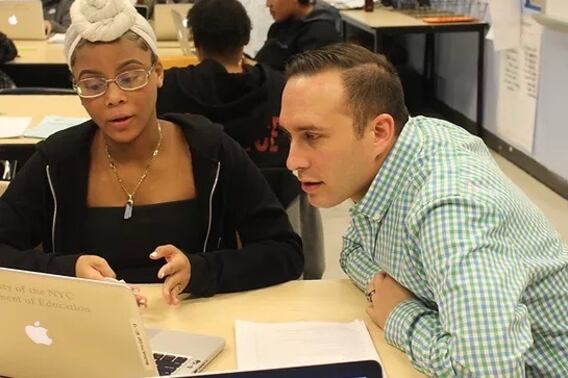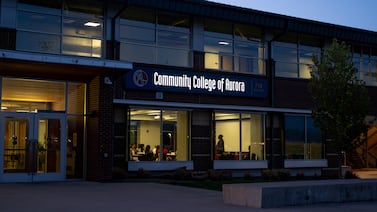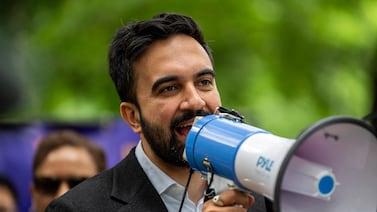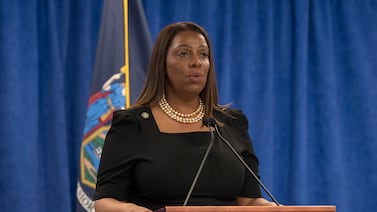Schools in the Philadelphia area are among the most segregated in the country, especially for Latino students, a new report has found.
According to the index used by the Century Foundation, a liberal think tank, the area comprising Philadelphia and Delaware County is the most segregated in the country for Latino students and ranks ninth for Black-white segregation. For white and non-white students in general, it ranked fourth in the severity of school segregation among the 403 metro areas studied.
Overall, the report found that school segregation is most extreme in the Northeast, and that most of that segregation is due to boundaries between districts. Charter and private school attendance and within-district patterns are smaller but significant factors.
In the report, segregation is measured on a scale of 0 to 1. A score of 0 means complete integration, with each school mirroring the demographic composition of the area studied. A score of 1 means complete segregation — that each racial group is completely isolated. Any score above .5 is considered severe segregation.
The national index for white-Latino segregation is .18. For the four-county region, including Philadelphia, Delaware, Bucks and Montgomery counties, it is .48. For Philadelphia and Delaware counties alone, it is .58.
The national index for white-Black segregation is .24; in the Philadelphia region it is .65. For just Philadelphia and Delaware counties, it is .64.
As with the country as a whole, most of the segregation in the area is due to school district boundary lines, according to the report. The city of Philadelphia is one big district, with more than 100,000 students and another 80,000 in charters. But there are more than 60 small districts in the surrounding counties, most with just a few thousand students each.
“Philadelphia is emblematic of many Northeast metropolitan areas in the way school district boundaries are incredibly segregating,” said Erica Frankenberg, a professor of education at Penn State and a desegregation expert.
The report comes out 68 years after the U.S. Supreme Court issued the Brown vs. Board of Education decision, ruling that schools segregated by race were inherently unequal. But Brown outlawed only de jure segregation — state laws that required segregated schools. It did not prevent or stem de facto segregation, which is caused by housing patterns and other practices, such as where school district lines are drawn.
While the Brown decision is the most famous, Milliken v. Bradley, a 1974 decision involving Detroit and its suburbs, had a bigger impact on what has happened in northern states. In it, the Supreme Court ruled that school districts were not obligated to desegregate unless it had been proven that the lines were drawn with racist intent.
Those decisions dealt with Black-white segregation; since then, Latinos have become the fastest growing ethnic student group in the country. They now comprise 27% of students. And they have remained largely segregated from whites.
“This diversity doesn’t always translate into integration,” the report said. “The de facto separation of students by race continues to be commonplace.”
Zahava Stadler of the national think tank Education Trust, who studies desegregation, said that Pennsylvania stands out among states for its many districts — there are 500 — and for the inequity of funding among them, due to a heavier reliance on property taxes to fund schools than in most other states.
“Wealthier communities are always incentivized to keep the walls up around districts to keep local dollars in and high needs students out,” Stadler said. “This is especially true in a state like Pennsylvania, which has very little policy governing those local dollars.”
In Pennsylvania, she said, “school district borders are drawn around homogenous communities” that grew largely due to “a long history of racial discrimination in home ownership. There’s a real racial element to property wealth differences.”
Philadelphia spends less per student than most of the surrounding districts, she noted, even though its students — most low-income students of color — generally have more needs.
“It really is the happenstance of local wealth and local decisions and not a lot of state action to ensure kids get access to what they need no matter where they live,” Stadler said.
That could change if plaintiffs are successful in a case challenging the state’s school funding system that is now being argued in Commonwealth Court.
“Lost in the public discussion of integration is the importance of integrated schools to better prepare students for democracy and building cohesion in communities that are increasingly diverse,” said Frankenberg. “More research is now showing how it matters for psychological and sociological reasons.”
Research also shows that attending integrated schools is associated with greater opportunities for Black and Latino students, she said.
‘The Civil Rights Movement failed in the Northeast’
Within Philadelphia itself, the Black-white segregation index is high – .579. Segregation within the district itself accounts for about a third of that, with segregation between public and private schools accounting for another 19%. Segregation between charter schools is a bigger factor – just over 25%.
Similarly, Latino students are highly segregated within city schools, with an overall index of .53. As with Black students, segregation within district schools is the largest single factor.
Latino educators in Philadelphia said that the findings are not surprising.
“The Hispanic-white segregation in this city is a result of the accumulation of decades and decades of federal, state, and city policies,” said Julio Nunez, assistant principal at Sheridan Elementary School. “We may have tackled racism on paper. We have yet to tackle it in our mindsets and hearts.”
Nunez noted that better schools are in areas with higher-priced housing that is often out of reach for people of color.
“If school integration is the goal, the approach should be multi-tiered at every level of government, and policy makers need to be ready to engage in courageous, disruptive policy decisions,” he said.
Adam Sanchez, who teaches history at Central High School, agreed.
“The increasing Latinx population in Philadelphia is living in a city and a country that hasn’t had the will to confront the legacy of racist government policy and private practices that have created neighborhood and school segregation,” he said. “There is a myth that we dealt with segregation in the 1950s and 60s — that the Civil Rights Movement was successful in doing away with the last vestiges of racism in this country. But that is nothing but a myth. When it comes to school and residential segregation, the Civil Rights Movement failed in the Northeast.”
Dale Mezzacappa is a senior writer for Chalkbeat Philadelphia, where she covers K-12 schools and early childhood education in Philadelphia. Contact Dale at dmezzacappa@chalkbeat.org.
Johann Calhoun contributed reporting.






